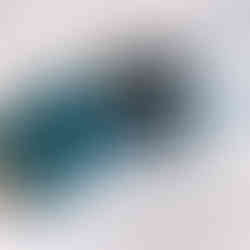Water-Cast Jewellery: Artistry or Cop-out?
- Supriti Vaidya
- Jun 19, 2020
- 3 min read
Updated: Sep 15, 2021
Today I’m going to talk to you about a jewellery making technique that flies in the face of convention; water-casting. I’m still umming and ahhing about whether it’s going to be part of my collection, but it’s an interesting concept, so I thought it would be worth a little chat about it.
In a nutshell, the water-casting process goes as follows:
You take some silver, put it in a crucible and melt it.
You pour the molten silver into a container of cold water.
The molten silver will solidify and you’ll end up with some organic shaped chunks of silver.
You convert as many of those chunks of silver as you can into pieces of jewellery.
There can be all kinds of variations to this, but the basic process remains the same. For example, if you put some dried beans in the container and cover them with cold water, you will get silver shapes that are influenced by the beans. Similarly, you can use dried spaghetti, little twigs, pretty much anything that doesn’t immediately dissolve in water, and you don’t mind discarding. And discard it you must; you really don’t want to be having that same pasta for dinner after a spot of water-casting.
Now that you know what the basic process is, think about this. In a previous blog, I described my design process (I’ve given a link at the bottom in case you missed it). The water-casting process is the very antithesis of that. There’s no effort gone into the design, there’s no thought given to design principles, there are no drawings, and there is no clear intention of producing a specific piece. In fact it feels as though remarkably little effort that has gone into making the jewellery. In short, a cop-out. But look again.
When I’m designing a piece of jewellery, I have complete control over the process. I decide on the shape, the size, the curvature, the angle. I decide on the weight, the thickness, the shine and the texture. With water-casting, I have relinquished control over all of these things. Instead, I have to find these things in the random lumps of silver presented to me out of the container. I have to look for some sort of meaning, some form of beauty in what looks like nothing. As I write this, I’m reminded of a quote I read somewhere; “It’s not what you look at, it’s what you see that counts.”
And seeing the right things, knowing which lumps to keep and which ones to discard, how they should be oriented, what gemstones they could be paired with; this requires a good eye if nothing else. With each lump of silver, you’re dealt a whole bunch of constraints. But you see, you still have to go through the design process. It’s just that now, you are designing from a creation instead of creating from a design. And to produce something appealing from that random creation takes effort, imagination and time. At its best, I would even argue that it’s a form of artistry.
And it’s perhaps because of this that I’m still dithering about whether water-cast jewellery should become a part of my repertoire or not. Yes, it turns out that I’m more creative than I’d imagined, but I’m no artist. I’ve had no formal training in art, and even if I had, it wouldn’t make me Van Gogh any more than having a degree in maths has made me Ramanujan. So I still have to decide if I have the eye for consistently seeing the jewellery in the lumps of silver. But I’m in no hurry to make up my mind. I’ll mull and ponder, and let you know when I decide.
By the way, those pieces I’ve shown above, took me days to make. I was trying to inject some predictability into an inherently unpredictable process. And, as enjoyable as it is, I don’t think I’m going down that track again.
If you liked this post, and would like to be told each time I do a new post, hit the SUBSCRIBE button in the menu at the top of the screen. I’ll even give you a 20% discount off your first purchase when you subscribe.
And here are the links to those earlier posts about my design process that I mentioned.







